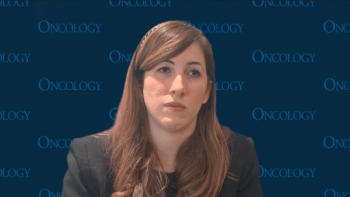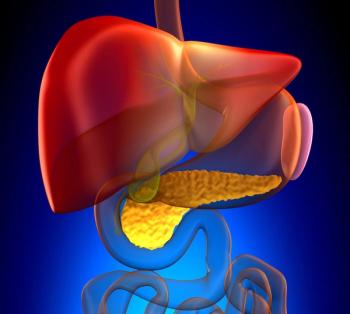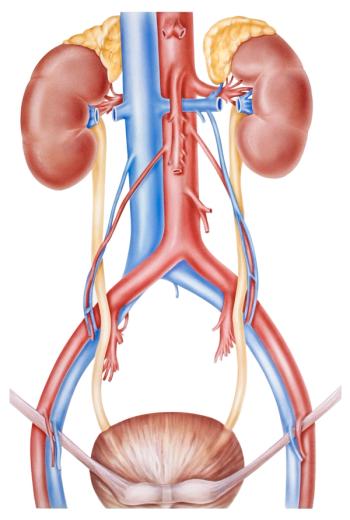
Glofitamab/Polatuzumab Vedotin Exhibits Response Durability in R/R LBCL
The glofitamab-based regimen displayed manageable safety, with minimal high-grade CRS and infrequent low-grade ICANS, in relapsed/refractory LBCL.
The addition of polatuzumab vedotin-piiq (Polivy) to glofitamab-gxbm (Columvi) displayed durable responses and efficacy among patients with relapsed/refractory large B-cell lymphoma (LBCL) and patients with high-grade BCL (HGBCL), according to findings from a phase 1b/2 study (NCT03533283) published in the Journal of Clinical Oncology.1
Efficacy data from the trial revealed that after a median follow-up of 32.7 months (range, 0-55) for the total population (n = 129), the objective response rate (ORR) as assessed by an independent review committee (IRC) was 78.3%, with 59.7% attaining a complete response (CR). Additionally, similar results were found with the investigator-assessed ORR and CR rate at 84.2% and 61.4%, respectively. Furthermore, after a median follow-up of 19.2 months (range, 0-43) among patients with HGBCL (n = 44), the ORR rate and CR rate were 79.5% and 65.9%, respectively.
Across all patients, the median duration of response (DOR) was 26.4 months (95% CI, 10.9-44.3), with a 24-month rate of 51.9%. For the 77 patients who attained a CR, the median duration of CR (DOCR) was 37.8 months (95% CI, 24.1-not estimable [NE]) after a median follow-up of 25.5 months (range, 0-48), with a 24-month rate of 63.9%. Among patients with HGBCL, the median DOCR was not reached.
Additionally, the median progression-free survival (PFS) per IRC assessment was 12.3 months (95% CI, 8.8-27.7) for the overall population and 16.3 months (95% CI, 9.1-NE) for those with HGBCL. The 24-month PFS rate in the overall population was 41.8%. Additionally, the median overall survival (OS) and event-free survival (EFS) in the overall population were 33.8 months (95% CI, 20.6-NE) and 11.5 months (95% CI, 8.5-17.7), respectively; the OS data were immature at the clinical cutoff date, with a 24-month OS rate of 54.3%.
“[Glofitamab/polatuzumab vedotin] demonstrated high efficacy, with frequent and durable responses in patients with heavily pretreated [relapsed/refractory] LBCL, spanning various histologies and including individuals who received previous CAR [chimeric antigen receptor] T-cell therapy,” lead study author Martin Hutchings, MD, PhD, staff specialist in the Department of Hematology at the Finsen Centre, National Hospital at Copenhagen University Hospital in Denmark, wrote in the publication with study coinvestigators. “A particularly important finding was the high activity in patients with HGBCL. The safety profile remained manageable. Long-term follow-up data on [glofitamab/polatuzumab vedotin] in patients with [relapsed/refractory] LBCL, including HGBCL, will offer valuable insights into its promising potential as a therapeutic option for patients with [relapsed/refractory] LBCL.”
The open-label phase 1b/2 trial enrolled patients with relapsed/refractory LBCL, including diffuse large B-cell lymphoma (DLBCL), HGBCL, transformed follicular lymphoma, and primary mediastinal LBCL. The study was expanded to include 44 patients with HGBCL based on a high unmet need in this subgroup.
Patients received pretreatment with 1000 mg of obinutuzumab (Gazyva) on cycle 1, day 1 at 7 days prior to the first glofitamab dose to help mitigate the frequency of cytokine release syndrome (CRS). Polatuzumab vedotin was given intravenously at 1.8 mg/kg on cycle 1, day 2 and day 1 of cycles 2 to 6 once daily for each 21-day cycle. Intravenous glofitamab was given as step-up dosing during cycle 1, at 2.5 mg on day 8 and 10 mg on day 15; the target dose of 30 mg was given on day 1 of cycles 2 to 12 for each 21-day cycle.
Following the first glofitamab dose, patients were hospitalized for 24 hours. A fixed duration of 6 cycles for polatuzumab vedotin and 12 cycles for glofitamab was given in the absence of disease progression, unacceptable toxicities, or withdrawal of consent. Patients with responses or stable disease were followed until disease progression, and those with progressive disease were followed for survival after an end-of-study visit.
Among the overall and HGBCL populations, the median age was 67.0 years (range, 23-84) and 66.5 years (range, 24-84), respectively. Most patients were male (63.6% vs 63.6%), had an ECOG performance status of 0 or 1 (94.6% vs 93.2%), and had Ann Arbor stage III/IV disease (76.7% vs 72.7%). Patients most often had an International Prognostic Index (IPI) score of 2 (30.2% vs 29.5%), 3 (24.0% vs 20.5%), and 4 (23.3% vs 25.0%).
A total of 72.9% and 70.5% of the overall and HGBCL groups, respectively, had extranodal involvement at study start, and 29.5% vs 22.7% had bulky disease. Most patients had negative status for double- or triple-hit lymphoma (45.7% vs 27.3%), had received 2 or more lines of treatment (58.9% vs 45.5%), and had disease refractory to the first line of previous therapy (62.0% vs 70.5%) or any previous therapy (79.1% vs 81.8%).
The primary end point of the trial was IRC-assessed ORR per PET-CT scan per Lugano 2014 criteria. Secondary end points included investigator-assessed ORR, DOR, DOCR, PFS, EFS, OS, and safety.
Regarding safety, 99.2% of patients experienced any-grade adverse effects (AEs), the most common of which were CRS (43.4%), neutropenia (41.9%), peripheral neuropathy (26.4%), diarrhea (24.0%), COVID-19 infection (23.3%), and pyrexia (20.2%). Additionally, 58.9% of patients experienced grade 3 or 4 AEs; the most common included neutropenia (32.6%), COVID-19 infection or pneumonia (9.4%), anemia (8.5%), thrombocytopenia (8.5%), and tumor flare (7.0%). Grade 5 AEs occurred in 9.3% of patients, and serious AEs occurred in 61.2%.
AEs led to discontinuation in 14.7% of patients, including 12.4% discontinuing glofitamab and 8.5% discontinuing polatuzumab vedotin. Only 1 instance of grade 3 and grade 5 CRS was observed, with serious CRS occurring in 29.4% of patients.
The time to CRS onset after the 30-mg once-daily dose was 36.2 hours (range, 18.5-55.9). The most common CRS management strategies included tocilizumab (Actemra; 33.9%), intravenous fluids (23.2%), low-flow oxygen (19.6%), and corticosteroids (14.3%).
Reference
- Hutchings M, Sureda A, Bosch F, et al. Efficacy and safety of glofitamab plus polatuzumab vedotin in relapsed/refractory large B-cell lymphoma including high-grade B-cell lymphoma: results from a phase Ib/II trial. J Clin Oncol. Published October 20, 2025. doi:10.1200/JCO-25-00992
Newsletter
Stay up to date on recent advances in the multidisciplinary approach to cancer.


















































































